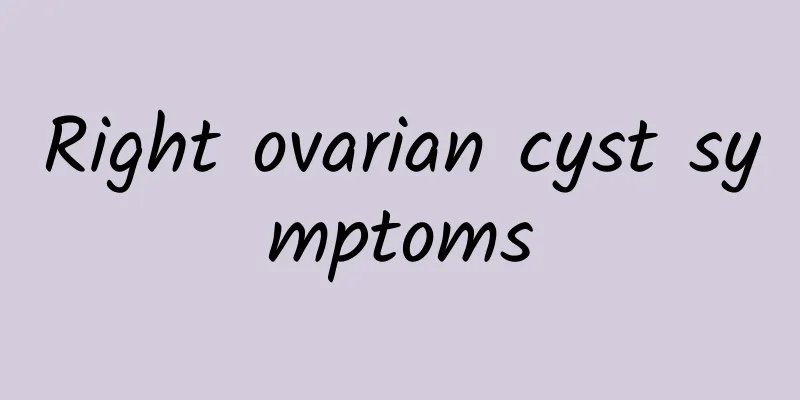How to diagnose acute and chronic pelvic inflammatory disease?

|
Chronic pelvic inflammatory disease and endometriosis are sometimes difficult to distinguish. Endometriosis causes more severe dysmenorrhea. If typical nodules can be felt, it will help with the diagnosis. The occurrence of pelvic inflammatory disease can cause great harm to patients. So how to diagnose acute and chronic pelvic inflammatory disease? Let's take a look at the relevant knowledge about acute and chronic pelvic inflammatory disease. Acute and chronic pelvic inflammatory disease can be diagnosed based on medical history, symptoms and signs. However, differential diagnosis must be done well. The main differential diagnosis of acute pelvic inflammatory disease includes: acute appendicitis, ectopic pregnancy, ovarian cyst pedicle torsion, etc.; the main differential diagnosis of chronic pelvic inflammatory disease includes: endometriosis and ovarian cancer. Acute pelvic inflammatory disease has a history of acute infection, with dull pain in the lower abdomen, muscle tension, tenderness and rebound pain, accompanied by rapid heart rate, fever, and a large amount of purulent vaginal discharge. In severe cases, there may be high fever, headache, chills, loss of appetite, a large amount of yellow leucorrhea with odor, abdominal distension, tenderness, and lower back pain. Nausea, abdominal distension, vomiting, diarrhea, etc. may occur when there is peritonitis. When pus is formed, there may be a lower abdominal mass and local compression and irritation symptoms. If the mass is located in the front, there may be difficulty urinating, frequent urination, and urinary pain. If the mass is located in the back, it may cause diarrhea. The systemic symptoms of chronic pelvic inflammatory disease are sometimes low fever, fatigue, and some patients develop neurasthenia symptoms due to the long course of the disease, such as insomnia, lack of energy, general discomfort, etc. The lower abdomen is swollen, painful, and the lumbar and sacral pain is often aggravated by fatigue, after sexual intercourse, and before and after menstruation. The above is the relevant knowledge of acute and chronic pelvic inflammatory disease. Do you understand it? Chronic inflammation can cause pelvic congestion and menorrhagia. When ovarian function is damaged, menstrual disorders will occur. When the fallopian tubes are blocked by adhesions, it will lead to pelvic inflammatory infertility. If you have any questions about pelvic inflammatory disease, please consult our online experts for answers. Pelvic inflammatory disease http://www..com.cn/fuke/pqy/ |
<<: What are the main aspects of dietary care for ovarian cysts?
>>: What are the symptoms of pelvic inflammatory disease
Recommend
Using psychotherapy to relieve patients' worries
Dysfunctional uterine bleeding is a gynecological...
What are the precautions during the treatment of vaginitis?
Vaginitis is a gynecological inflammation that is...
Causes of ovarian cysts in women
Ovarian cysts are mainly a type of benign tumor. ...
Differences between acute and chronic cervical hypertrophy symptoms
As a manifestation of chronic cervicitis, the sym...
Which hospital is good for treating cervical warts?
As the number of patients suffering from cervical...
What should I do if adnexitis recurs?
What should I do if adnexitis recurs? The recurre...
What is the cause of spotting in the fifth week of pregnancy? Pay attention to these 4 situations
If a woman has spotting after five weeks of pregn...
What are the symptoms of pelvic inflammatory disease?
If pelvic inflammatory disease is not treated in ...
The following are some preventive measures for cervical erosion:
In life, it is very important for women to do a g...
How to choose a hospital for the treatment of cervical erosion? Is it a professional and formal hospital?
Although cervical erosion is a common disease, th...
Symptoms and treatment of adnexitis
What are the symptoms and treatment of adnexitis?...
What are the main symptoms of uterine fibroids in women?
Experts say that the symptoms of uterine fibroids...
What is a benign ovarian cyst?
What is a benign ovarian cyst? Which groups of pe...
What kind of surgery is needed for malignant uterine fibroids? Can malignant uterine fibroids be treated with surgery?
Uterine fibroids are a common benign tumor in wom...
A man weighed over 100 kg and lost 31 kg in 3 months! Double-channel gastric bypass surgery fulfills Polyx's dream
Successful weight loss can make a lifelong dream ...









